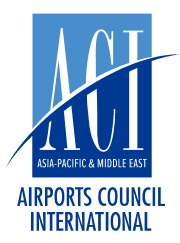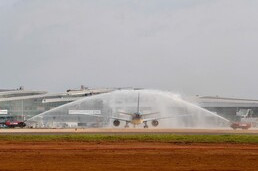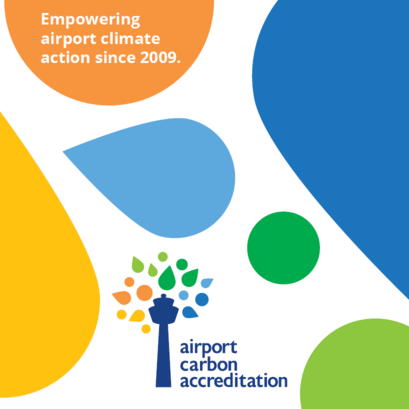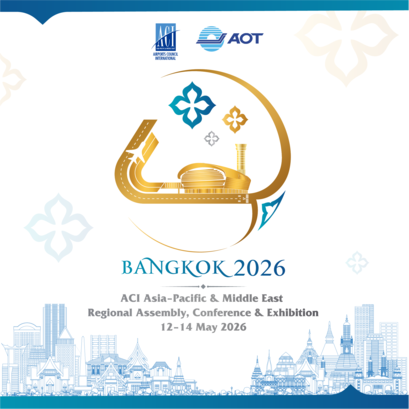
2023 Annual Meeting: Chair and Chief Executive addresses
- 2023-10-17
Address delivered by Patrick Strange, Chair
Tēnā koutou, tēnā koutou, tēnā tatou katoa.
Good morning and welcome to today’s 2023 annual meeting. I’m Patrick Strange, Auckland Airport’s chair.
With us today are my fellow directors: Julia Hoare, Liz Savage, Tania Simpson, Christine Spring, Mark Cairns and Dean Hamilton; along with our chief executive, Carrie Hurihanganui, who we’ll be hearing from shortly. Director Mark Binns is unable to be with us today and sends his apologies. Julia Hoare is standing for re-election and will also address the meeting a little later.
Also here today is our General Counsel Ian Beaumont, Chief Financial Officer Phil Neutze, other members of the senior team, and our auditors from Deloitte.
A strong recovery
In the past year, 15.9 million passengers passed through Auckland Airport’s terminals. This was up by 184 per cent on the year before, though still short of the 21 million passengers we handled in 2019, the last pre-COVID year. And this is reflected in our financial performance.
Some key numbers for our 12 months to the 30th of June 2023:
- Our revenue was up 108 per cent to $626 million;
- Operating EBITDAFI was up 175 per cent to $397 million;
- Reported profit after tax was down 77 per cent to $43.2 million, due principally to non-cash asset revaluations reductions due to rising interest rates;
- Similarly, earnings per share were down 78 per cent, to 2.9 cents;
- Removing the one-offs, we recorded a net underlying profit after tax of $148 million, and an underlying net profit per share of 10.1 cents;
- We paid our first dividend in three years based on our second-half earnings;
- And we reintroduced our dividend reinvestment plan for the dividend and were pleased to see shareholders representing 33.4% of our shares participate.
There was world-wide uncertainty as to the speed of passenger numbers recovery post-COVID. Initially, there was a strong bounce as people made up for deferred travel, but demand has continued to grow strongly since. By June 2023 passenger numbers were running at 88 per cent of the numbers they were in June 2019 – a key pre-pandemic reference month.
Domestic passengers saw a near doubling (90 per cent) to 8.1 million passengers in the 2023 financial year.
However, it was the volume of international passengers that really moved the needle. Numbers were up more than four-fold to 7.2 million. This is despite airlines being limited by a global shortage of aircraft and crew, and some very high fares on our key routes.
We still have some catching up to do but, in big picture terms, we are pleased with our trajectory and can feel optimistic about continued growth.
We do have to compete to encourage airlines to fly here - they have other choices to assign their limited capacity to - and your company’s success in getting key international operators to choose Auckland is really pleasing - and great for New Zealand Inc and our economy. Carrie will cover this in more detail.
Longer-term, forecasting is less sure. But the common consensus of international experts is that international travel will continue to grow: the industry's success in addressing the greenhouse gas issue is one key factor in the speed of this growth.
Impacts on customer experience
With the excitement of travel’s return comes the responsibility of looking after our customers. We would like to acknowledge that the year threw challenges at us, and that this impacted travellers' airport experience.
Global aviation staffing shortages and northern hemisphere weather saw passengers arrive at airports around the world - including Auckland - without their bags last summer. Then we had Auckland’s historic January floods, which closed our international terminal for 37 hours.
More recently, we have had unacceptable delays clearing international passengers at peak times of the day (which can include around 1am in the morning sometimes), and we apologise to travellers who have been affected. The job of bringing passengers across the border is critically important and the smooth running of the eco-system relies on teamwork between all the players – airlines, the airline ground handlers, Customs, Biosecurity NZ and Auckland Airport. Carrie will discuss this further, and I would like to thank her and her team - particularly those on the front-line – for their around-the-clock efforts in recent weeks. While some operational challenges remain, clear improvements have been made meaning a better experience for travellers, and this will continue to be our focus as we look ahead to the summer peak.
And thanks to our customers, who have been generous with their understanding, but this is not the way we, the airlines and the border agencies like to do things at Auckland Airport, so we are working very hard together to fix it.
Building for the future
With the return of international routes and services and growing passenger volumes, the team is focused on our strategy, ‘Building a Better Future’, and serving the New Zealand community as well as we possibly can.
As our country’s principal gateway, we have a responsibility to make the best long-term investment decisions so we can deliver the critical assets needed to support travel, trade and the wellbeing of our wider economy.
Today I’m pleased to say we are underway with our most important journey yet – delivering an infrastructure development programme that will bring greater resilience and sustainability to the airport for the next generation.
It is prudent investment that will uplift the traveller experience for everyone, ensure a better service to our airline partners and avoid capacity constraints at New Zealand's key gateway, while protecting and growing the value of your asset as shareholders.
The development is centred around replacement of the ageing domestic terminal with a new terminal integrated with the existing international terminal. The development is consistent with our long-term development plan, agreed with the airlines well before COVID. Unfortunately, COVID has cost us several years. And post-COVID, there has been a world-wide step-change in infrastructure costs, to which we are not immune.
Principally due to the increased cost, Air New Zealand and the Board of Airline Representatives ultimately decided not to back the plan for a new domestic terminal. But our current plans are clearly the best alternative, and delaying or doing nothing is simply not an option.
We acknowledge that transforming our infrastructure will not be easy amid a busy, working airport. Nor will it be cheap. We will continue to listen and engage with key stakeholders, but it’s a challenge we will not shy away from.
Auckland and New Zealand have had enough of deferred infrastructure investment. If it weren’t for the pandemic, the build would have been well advanced by now. Further delays will only add to the cost for future generations.
Everyone can be assured that we are taking all efforts to re-develop in the most capital-efficient way possible and with the least impact on the traveller experience.
Aeronautical pricing
New aeronautical pricing took effect on 1 July 2023, after extensive consultation with airlines, and an earlier 12-month price freeze to help them rebuild from the pandemic.
Price Setting Event Four (PSE4) as we call this process, applies to the period FY23 to FY27 during which we are planning to commission $3.1 billion of regulated capital expenditure in the five-year period.
The increased capital plus the increase in interest rates, which have a strong impact, see our domestic charges rise by $3.50 from a low base of just under $7 to $10.25 over the 2024 financial year. By 2027, they will be at a similar level to current charges at Wellington and Christchurch airports.
The new charges are now, as usual, being reviewed by New Zealand’s competition regulator, the Commerce Commission. We welcome this scrutiny.
There will be further changes in the next pricing period from 2028 as new infrastructure is completed. However, these charges will also depend on interest rates at the time and any changes in Commerce Commission methodology.
The Commission is undertaking a review of this methodology – called the Input Methodologies – and published a preliminary paper for discussion earlier this year. We – and other airport companies and expert advisors –strongly disagreed with elements of the preliminary paper.Strong and consistent submissions to the Commerce Commission have been made to point out areas of concern and logic in the Commission’s preliminary work. Price setting methodologies are necessarily technical, but the impacts are very real.
A thriving precinct
Auckland Airport’s focus is providing a safe and secure gateway, but the company’s activities are broader than that.
Our ‘Building a Better Future’ strategy seeks to expand a thriving aviation precinct of travel, hospitality, business, retail and trade alongside our critical aviation infrastructure. I am pleased with progress over the past year.
We already have over 250 businesses operating across the wider precinct, and this is set to grow. The retail business is recovering strongly as passengers return, and we have successfully transitioned to having a single duty-free operator, making for better use of space and a better experience for travellers. Our two hotels, owned with our joint partner Tainui, have performed extremely strongly, with our new hotel the Pullman, on target to open in December. And our business park, The Landing, has had another excellent year, with new facilities for Kerry Logistics and Healthcare Logistics completed and two more new facilities will be completed over the current financial year.
And as Carrie will share with us, we have made huge progress on both construction and leasing of the new fashion-led retail destination Mānawa Bay: also, the $300 million transport hub at the front door of the international and new domestic terminals is well down the track.
Safety
With so much construction underway, and a lot of new faces around the precinct, safety is a major focus. Up to 20,000 workers come to work at the airport precinct each day, and we are very focused on ensuring their safety. We have established a new executive leadership position, Chief Safety & Risk Officer, to bring even more focus as we move into a heavy construction period.
Our focus on health and safety starts at the top with our senior leaders regularly getting out across the precinct with the sole purpose of gaining first hand insights into how different teams are managing health and safety as well as getting a fresh set of eyes on work sites. This alongside the sustained diligence and hard work of our teams has seen reduced employee injury rates and some good safety enhancements across the precinct.
Sustainability goals
As we invest for the future, sustainability is front of mind – our planned investments will help us close in on our climate change goals and create a more sustainable airport.
We are targeting a 90 per cent reduction in scope 1 and 2 emissions from a 2019 baseline, to achieve Net Zero carbon emissions by 2030. We are already moving the needle. In FY23 we achieved a 27 per cent reduction against the 2019 baseline, and we’re proud to have a bold programme of work underway as Carrie will elaborate.
Wrapping up
It’s been a big year. I would like to thank our 580-strong team of employees ably led by Carrie and our management team. They have risen to the challenge of caring for our customers, a flood event and recovery, and numerous simultaneous projects across the airport precinct to Build a Better Future.
I would like to thank my fellow directors and our investors for sharing our vision of the possibilities and for your continued support.
As most of you will be aware, Phil, our chief financial officer, will be moving on to a new challenge at the end of the year after 14 years at the airport. We thank him for all he has done and wish him well for the future.
And thank you, the shareholders, for your continued loyalty, particularly through the difficult COVID years. Better times are ahead, and it is hard to conceive of a more exciting, and critical, period for Auckland Airport.
Address delivered by Chief Executive Carrie Hurihanganui
Thank you Patrick,
Kia ora koutou katoa,
It is a pleasure to report back to you on a year in which we saw a vibrant return of activity to Auckland Airport.
We have loved seeing the multitudes of returning families and friends, sports teams, holiday makers and business travellers at Auckland Airport. Hybrid combinations of these travel groups are also flourishing – such as the new-found rise of the ‘Bleisure’ traveller – those clever people who seek to combine business and leisure travel together.
After the ups and downs of the 2022 financial year, we had been forecasting conservatively for the return of travel over the 2023 year. So, we have been very pleased indeed to see domestic travel and international routes and services rebound more strongly than anyone had anticipated.
Overall, by year’s end in June, international seat capacity had recovered to 90% of pre-pandemic levels, and domestic recovered to 89%. The return of passenger flights also restored international freight capacity to 95% of pre-pandemic levels.
As Patrick has already pointed out, I’d like to acknowledge that the journey back to operating at full capacity has not always been smooth. On behalf of the management team, I too would like to thank travellers for their patience. I can assure you that bringing a better experience to customers is our absolute priority to ensure a less stressful and more enjoyable journey for travellers.
And I’d like to give a little more context here.
Most of the recent challenges have been experienced in the international arrivals area – a system that is made up of the airport, airlines, the airline ground handling staff, and government agencies – Customs and Biosecurity NZ.
It takes teamwork and co-operation to get the system working efficiently, and we have experienced more bumps than we would like in recent times.
Global staff shortages in aviation continue to impact the smooth running of airline services. Organisations are experiencing issues with the recruitment and training of employees. To own our part of the system, we also have construction taking place in the arrivals hall, constraining space efficiency in the short term.
We have pulled out all the stops alongside our airport partners to deliver improvements through a range of initiatives, and I’m pleased to say we’ve made great gains over the past month, while ensuring the integrity of important border processes is maintained.
We have increased our front-line customer experience staff by 103% over the last six months, with 30 new staff. Staffing in these roles is now 41% higher than 2019. During the summer period we’ll be bringing in an additional 45 holiday hosts.
We now have separate lanes for Australian and New Zealand passport holders at MPI and we are supporting the ground handlers to more efficiently use the baggage system for a faster return of checked bags to travellers.
I can assure you that we will keep working on this until we get it right for customers.
These disappointing systems issues, along with soaring passenger numbers, underscore the need for the long-term improvement projects we now have underway across nearly every aspect of airport infrastructure and operations.
Recovery of the business
Globally, airports and airlines have rebuilt their workforces, new routes are coming on stream, aircraft load factors are high, and we are looking to a busy summer peak ahead.
In the 2023 financial year, we had 25 airlines flying to 40 destinations to and from Auckland Airport. On both counts, this is a near doubling from the toughest days of the pandemic – where we experienced lows of 12 airlines servicing us to just 21 destinations.
The North American routes have been a stand-out feature. Air New Zealand now flies into seven North American cities, including its flagship New York service. This is a leap forward for aviation that was not imaginable prior to the new generation of planes. Yet it’s not just about the Big Apple; the addition of direct routes from Auckland to Chicago and Houston, too, have brought middle America closer for the average Kiwi.
In June this year Qantas joined the New York route, building strongly on the momentum as Hawaiian Airlines, Air Canada, United Airlines and American Airlines reconnected into Auckland, with Delta Airlines to follow later this month.
We are forecasting a 29 per cent increase in flight capacity over November 2023 to March 2024 compared to the same period prior to the pandemic.
There is now a promising recovery on routes to and from China after a slower start due to protracted travel restrictions. This is a key trade and tourist market for New Zealand. Auckland Airport now has 27 flights per week operated by five airlines to four cities in mainland China. Overall, capacity between China and Auckland had recovered to 78 per cent of 2019 levels by financial year’s end. At the end of September this was sitting at around 93% of pre-pandemic capacity, and by the end of December it will be 103% with the recently announced Auckland-Hangzhou services, to further highlight the velocity of this comeback.
Here in our own backyard, trans-Tasman connectivity is back to 91% of pre-pandemic capacity. Veterans on the route Air New Zealand, Qantas and Jetstar, have been joined by AirAsia X flying between Auckland and Sydney, with Batik Air starting on the Auckland-Perth route in August 2023. We also welcomed Jetstar starting a new daily service between Auckland and Brisbane.
All up, it’s a healthy and growing picture for supply and demand for aviation, and the winners in this are all of us: intrepid New Zealanders with a hunger to see the world and offshore visitors with a desire to see our amazing country.
Investing in Auckland Airport’s future
Alongside the return of airlines, we are investing in the airport’s long-term future.
As New Zealand’s international gateway we need to build in greater capacity and resilience, so we can enable our country’s prosperity rather than hold it back.
Our commitment to new infrastructure lies across three key areas: our terminals, our transport hub, and on our airfield.
We’re not hiding from the fact that our 57-year-old domestic terminal is reaching capacity. By the end of this decade, travellers will demand a lot more than the experience it currently offers, while airlines also have much to gain from a new terminal in terms of capacity growth, sustainability outcomes and more resilient infrastructure.
When it opens in 2028/29, the new domestic terminal will improve the customer experience. It will have built-in facilities for self-service check-in, shorter queuing times, 44 per cent more capacity for passenger processing per hour, and a five-minute indoor walk between domestic and international flights.
It will also build necessary resilience into our airfield with a 26 per cent uplift in domestic seat capacity by providing additional gates to cater for larger jet aircraft. It will be the first time since 1977 that domestic travel and international travel will be together under the same roof at Auckland Airport.
We are also well down the track on constructing a new $300 million Transport Hub at the front door of what will be the new integrated international terminal.
This will create a seamless arrival and departure experience for customers. It will offer an undercover connection to the international terminal and vehicle lanes flowing through the ground floor of the building to create a modern pick up and drop off zone for commercial and public transport.
With ongoing change and construction inside the terminal, the new transport centre will smooth the overall experience for our customers with the new pickup/drop off expected to open in March 2024 for a more streamlined arrival and departure experience.
The third leg of the trifecta is a historic expansion of the airfield.
We are strengthening stormwater systems and converting an area the size of 23 rugby fields west of the current terminals into an aircraft parking area capable of taking the weight of A380 aircraft. It will provide extra taxiways and seven remote stands for layover aircraft, including five stands with in-ground jet-fuel reticulation and other services. In time, this airfield expansion will connect to the integrated terminal, a planned cargo precinct and, potentially to a future second runway.
Serious about sustainability
Three years down the track in reducing our Scope 1 and Scope 2 carbon emissions, our processes for measuring and making decisions which effect the environment are maturing, and beginning to make a measurable difference.
In 2020 we set a target to reach Net Zero Scope 1 and 2 emissions by 2030. To reach this target, we have mapped out a pathway to achieve a 90 per cent reduction in these emissions from our 2019 baseline. We plan to reduce the residual emissions, around 10 per cent, through permanent carbon removals.
We are tracking ahead of our planned pathway. As mentioned by Patrick earlier, this financial year, our Scope 1 and 2 carbon emissions represented a 27 per cent decrease from the baseline year (2019).
Site redevelopment creates opportunities to introduce far more carbon efficient technologies. For example, we are in a phased process to electrify the country’s largest air conditioning system that cools and heats our international terminal.
This will be the equivalent of 3,000 household air conditioning units moving to electric power, rather than gas, when we transition over from six natural gas boilers that currently keep the system pumping. This move alone will reduce our Scope 1 emissions by 1,500 tonnes of carbon per year.
That’s more than a third of our current total Scope 1 and 2 emissions in one fell swoop.
A 2.3-megawatt solar array on the roof of our new premium outlet store Mānawa Bay will generate enough electricity to power around 80 of the 100 stores inside. Like the smaller array on the roof of the transport hub, it will provide a resilient supply of renewable energy as we evolve for future growth.
Of course, Scope 1 and 2 emissions make up only a small part of our total inventory of Greenhouse Gas emissions. We are working closely with major airlines to understand their needs and requirements, as they invest in larger, more efficient domestic aircraft, and future low-carbon aircraft technology.
We are installing ground power units at each gate to supply power to aircraft to reduce fuel use and provide charging for electric ground handling equipment and vehicles. We will maintain our active role in the Sustainable Aviation Aotearoa group, working with our industry peers and government agencies to further de-carbonise the aviation industry.
My brief overview on sustainability would not be complete without touching on our community support efforts. We have continued our long-standing support of community organisations in South Auckland. This included distributions through the Auckland Airport Community Fund to assist with flood relief and providing funding support to the Ara Education Charitable Trust, which creates pathways into work for school leavers not going directly into tertiary education or training.
Commercial projects
Over the past three years, travel disruptions owing to the pandemic had a devastating impact on the retail outlets operating within our terminals. We have been delighted to see vibrancy return to these operations with the strong return of passenger numbers.
One of the largest is Aelia Duty Free, which has taken on the role as Auckland Airport’s duty-free operator, after winning a short-term extension of their contract until mid-2025 after we moved to a single operator model.
As part of this transition around 90 per cent of existing duty-free staff were able to transfer to Aelia Duty Free. Within the next year, we expect to get a tender process underway for a long-term duty-free contract at Auckland Airport.
In the wider precinct, construction of the Mānawa Bay premium outlet shopping destination is on schedule, and on track to open at the end of the 2024 calendar year. More than half of the 24,000sqm of retail space, that’s around 100 stores, have been pre-committed by sought-after international brands such as Kate Spade, Coach, Fila, and Under Armour, to name a few.
We also remain very active in commercial and industrial development at The Landing. We have been appointed to develop new standalone facilities for IKEA, DHL, and Reece Group, all of which target a 5-star Green sustainability rating and will begin construction during the 2024 financial year.
Ahead of that, we’ll be opening our new 5-star hotel in mid-December this year – the 311-room Te Arikinui Pullman Auckland Airport Hotel – a joint venture with Tainui Group Holdings (TGH). This super premium hotel will be a welcome addition to our two existing hotels in the airport precinct which have recently enjoyed nightly occupancy rates of around 90 per cent.
Team changes
It simply would not be possible to manage this breadth of projects without a strong and committed team. I warmly thank our whole airport team and airport community for the progress we have made during a challenging year.
During the year we reinforced our management team with the appointment of Melanie Dooney as Chief Corporate Services Officer (in November 2022), Chloe Surridge as Chief Operations Officer (in May), and Richard Wilkinson as Chief Digital Officer (in August). And Darren Evans will join us in the newly created role of Chief Safety and Risk Officer, in November.
I’m proud to have such a strong team around me and I wish to thank the Auckland Airport Board for their guidance and support amid a period of both challenges and exciting transformation for our airport.
Outlook
Looking ahead, we continue to see a positive recovery of the aviation industry. In line with this, we are providing guidance of underlying profit after tax of between $260-$280 million for the 2024 financial year. We expect capital expenditure of between $1-1.4 billion for the period.
Based on the International Air Travel Association’s (IATA) outlook for global air travel, we still expect our total passenger numbers to recover to pre-pandemic levels during 2025.
For the full 2024 financial year we anticipate international passenger numbers will be around 92 per cent of pre-COVID-19 levels, with domestic passenger numbers at around 89 per cent.
This would mean overall passenger numbers of around 19.1 million for the 2024 financial year – or an estimated extra 3.2 million passengers through our terminal doors for this financial year compared to last.
We are in the midst of a once in a generation major re-investment in the infrastructure at Auckland Airport to set us up for the decades ahead. As travellers continue to return in substantial numbers, we are reinventing the traveller experience and working hard to achieve ambitious reductions in carbon emissions.
Most of all, we are strongly committed to delivering a new, connected national gateway that does justice to our beautiful city of Auckland and the expectations of our global visitors when they come to Aotearoa New Zealand.
E mahi ana mātou mō Aotearoa. We are working for New Zealand.
